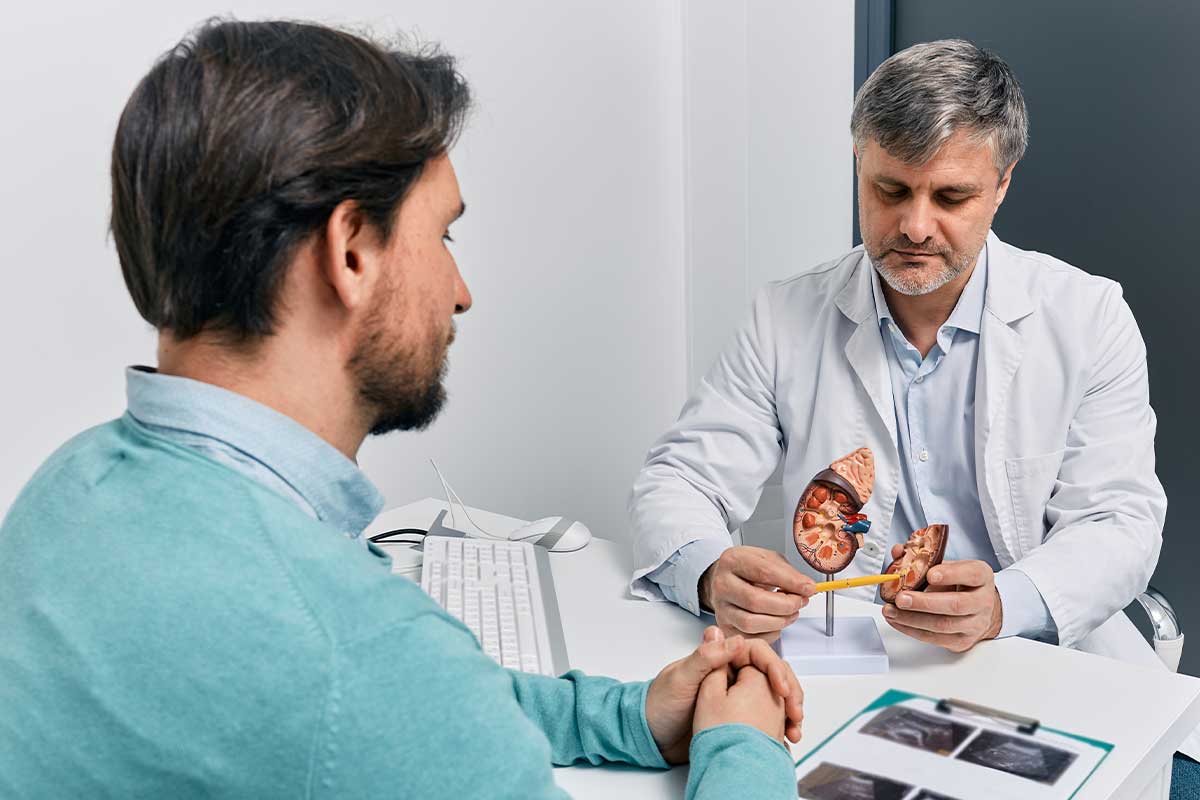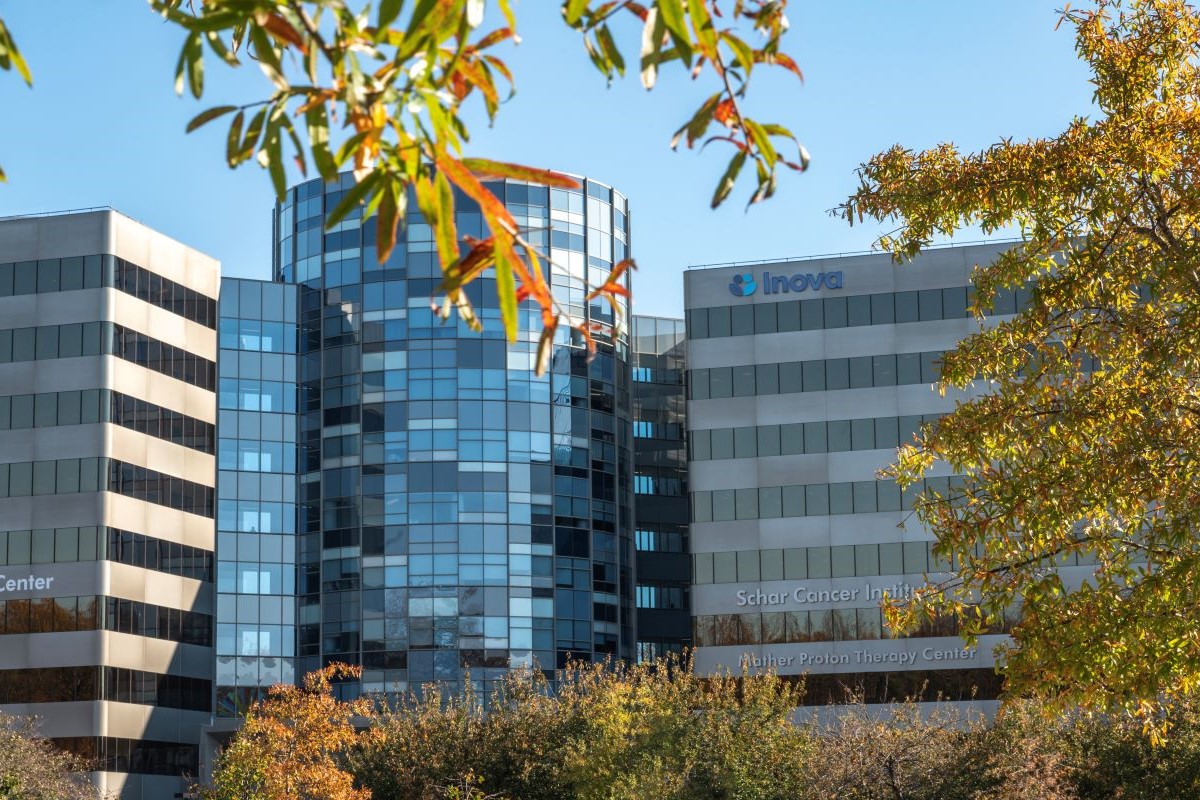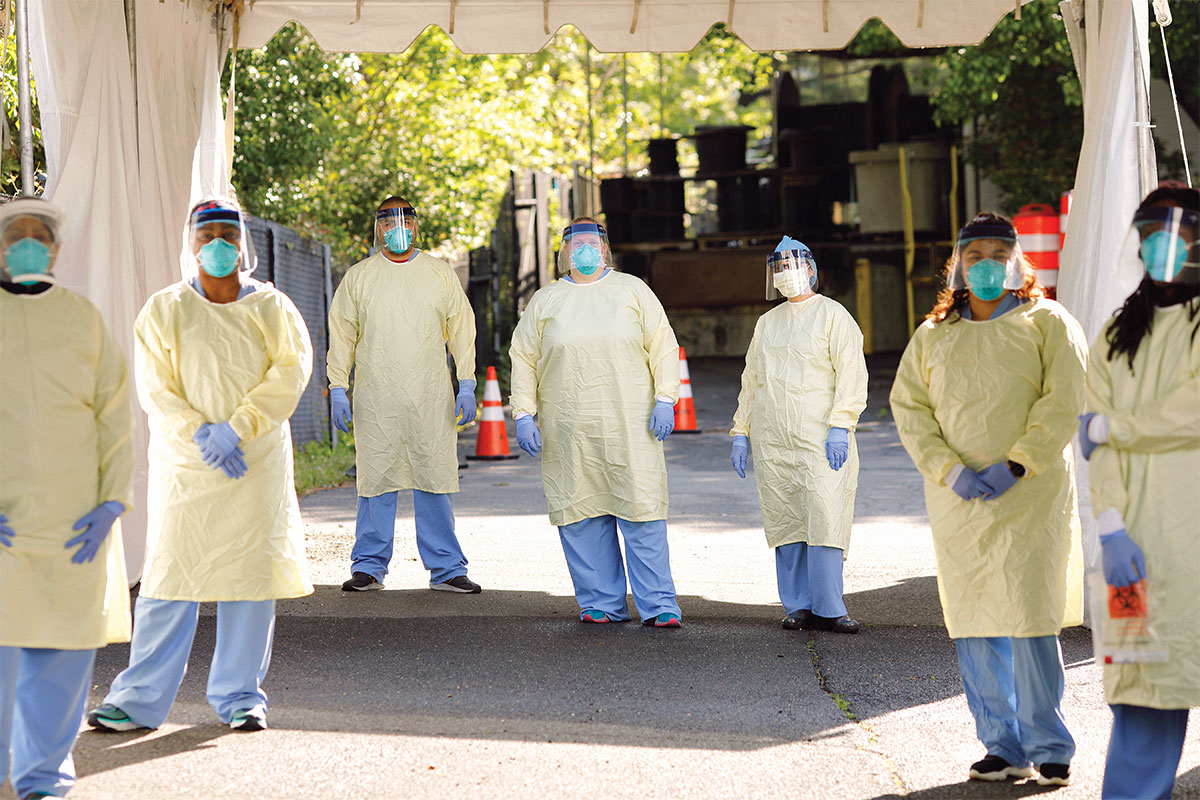
For the doctors and nurses working on the front lines, the threat of COVID-19 is always lurking.
“From a day to day, minute to minute PPE risk, there’s nothing we’ve ever seen like this,” says Dr. Michael Silverman, emergency department medicine chairman at Virginia Hospital Center in Arlington. Even “in a trauma center, where you’re worried about getting soaked with blood. There were a few times in my career where blood soaked through my scrubs onto my skin, but you just have to take a shower and you know you’re clean, but you don’t fully ever know when you’re clean from COVID. There’s nothing that I’ve experienced like this with the day-to-day frequency and that stress of ‘could you contaminate yourself and make yourself sick?’”
The constant threat of contracting the coronavirus as they treat patients who have fallen ill is just one surreal layer those on the front lines are facing as they battle a global pandemic that, as of press time, has killed 1,014 people in Virginia alone and sickened more than 31,000 in the state.
As the virus took hold in the United States back in March—and the grim stories out of New York City flooded 24-hour news networks—local hospitals readied themselves for a surge of sick patients, which included prepping isolation areas for potential COVID-19-positive patients, expanding ICU capacity, sourcing personal protective equipment, ramping up testing capabilities and finding ways to assess and treat patients remotely.
And while Northern Virginia hasn’t yet seen an influx of patients great enough to overwhelm its hospital systems, treating COVID-19 patients has eclipsed everything else for several months—and will likely continue throughout the summer.
“There was a real time period where we went from, ‘Let’s have some meetings about this,’ to ‘Let’s have meetings two to three times a day,’ and it occupies everybody’s time,” says Silverman. “That decision was made early and it was critical in rolling out our whole project and planning. … Our job and my job and the hospital’s job is to plan for a surge whether it comes next week, next month or down the line into the summer or fall. It’s an entirely new virus with an entirely new profile of what it does, and so we have to be prepared for that.”
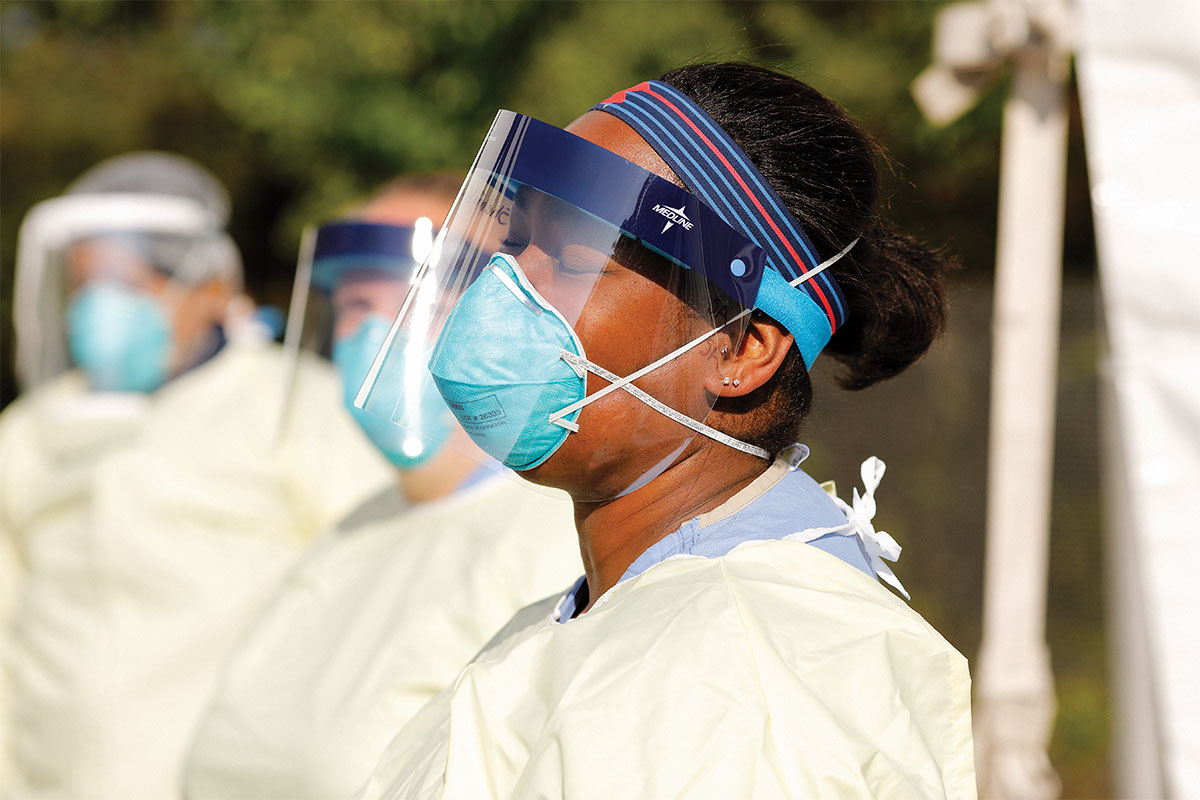
At Virginia Hospital Center, there are 28 ICU beds with ventilator capacity, and a nursing unit on standby that can be converted to an ICU should there become a need, according to Dr. Jeffrey DiLisi, chief medical officer at Virginia Hospital Center. But the hospital has only had to use about 20% to 30% of its ventilators so far, according to DiLisi.
While many patients will need to be admitted to the hospital for treatment—whether in the ICU or in a less critical capacity—with a particularly contagious virus like COVID-19, medical providers also quickly ramped up ways to expand telehealth capabilities.
Locally, Mid-Atlantic Permanente, which has 15 medical offices in Northern Virginia, had already been developing a “virtual rounding” system when the virus hit, says Dr. Farzaneh Sabi, associate medical director for hospital operations at MidAtlantic Permanente Medical Group and Kaiser Permanente. As coronavirus spiked in the region, they began treating patients remotely.
“The same way we have our physicians who round [at a hospital] on a twice-daily basis, we created a model where physicians virtually round on patients in their homes for a period of time,” explains Sabi. “So this really became instrumental in our ability to safely keep our patients at home during a time when they’re very scared, they’re not really sure what’s going to happen, and we too aren’t really sure how each patient is going to react to the infection—if they’re going to decompensate or continue to improve.”
Patients also receive a pulse oximeter device to help them monitor oxygen levels at home (lowered oxygen levels and trouble breathing have been hallmark symptoms of COVID-19 that may lead to hospitalization).
“Basically, we use this program for outreach, to check on their symptoms,” says Sabi. “We use video to help us look at the patient, assess their breathing. If they’re having a hard time completing sentences, if they’re gasping for breath while they’re talking to us, if they just look exhausted, [seeing that on the video] helps us guide their care.”
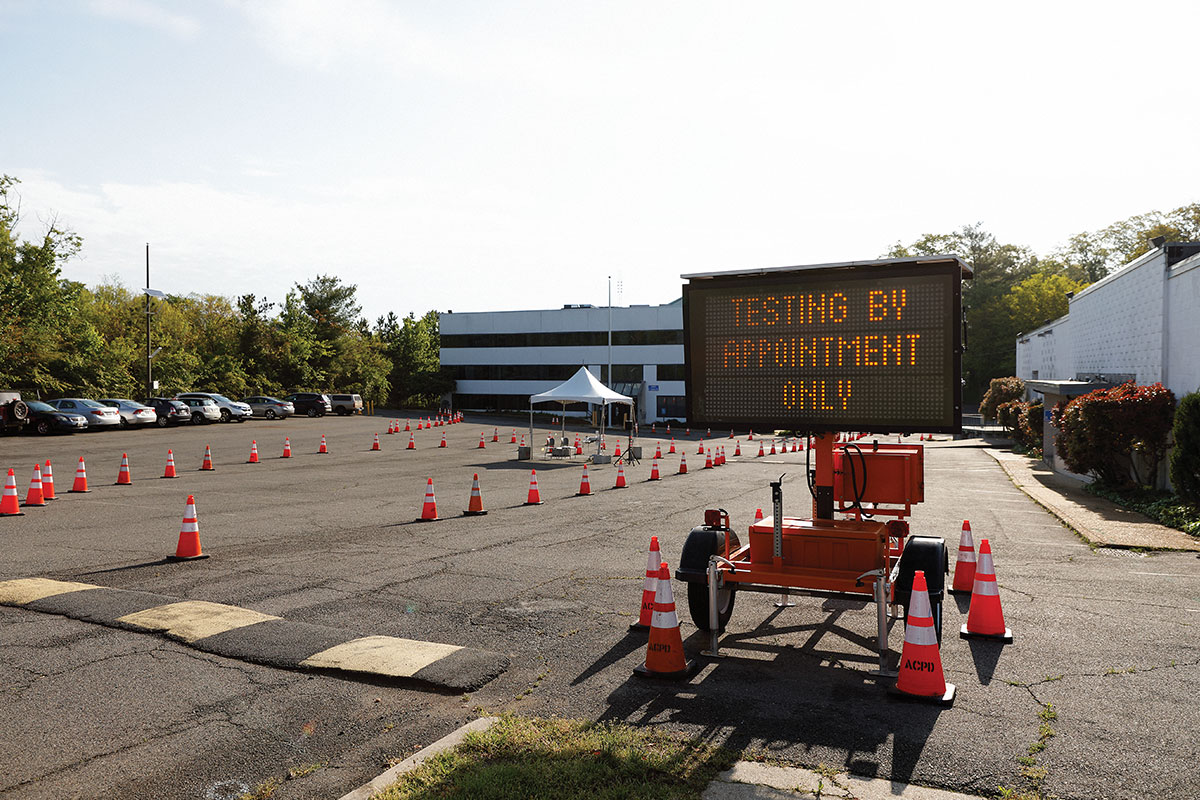
Making testing more readily available has been a well-documented struggle at the federal level, but in Northern Virginia, hospitals have worked to expand availability. While the criteria to receive a test remains stringent—such as being symptomatic or in a high-risk category, among other requirements—drive-thru rapid testing is now available in the region, and it’s expected to expand this summer.
At Virginia Hospital Center, testing has been available at a remote site in Arlington since mid-March. James Meenan, director of VHC’s Outpatient Lab and Case Management, says the hospital stood up its testing site in a matter of days. On the orders of a doctor, patients can get an appointment and be tested from the safety of their car (which also removes exposure risk from the ER or doctor’s offices). Patients do not have to be a resident of Arlington to qualify for a test, and those who don’t have a primary care physician are able to call VHC to speak with someone who can determine if they should have a test.
As of press time, the site was testing, on average, about 120 patients per day, and overall, they’ve tested 3,660 people. Of those, says Meenan, an average of 22% have tested positive.
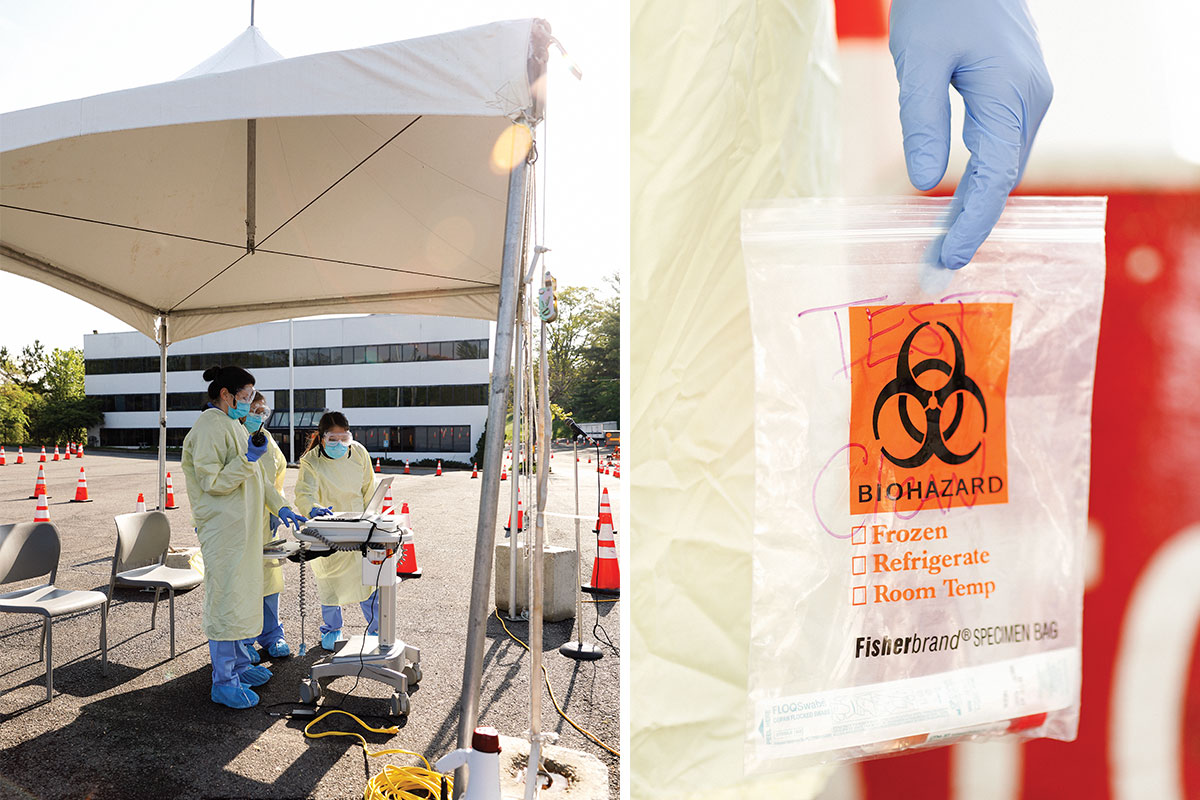
At Children’s National Hospital, drive-up testing is also available at an off-site location. The DC-based hospital (with satellite offices in NoVA and Maryland) has also been seeing potential COVID-19 patients in its ER, says Dr. Joanna Cohen, an Emergency Department doctor at Children’s National Hospital. In addition to the young patients the hospital normally sees, Children’s has also started accepting patients up to 29 years old to offset demand in other hospitals.
But, even as local hospitals put on a brave face for patients, there’s an undercurrent of the unprecedented nature of living through a global pandemic.
“This is totally unprecedented,” says Cohen. “I was a medical student in New York during 9/11, but this is so different in so many ways. It has such a global impact.”
“It’s been hard. I think most of us have not had a day off in the past two months,” says Sabi. “We’re working 14- to 15-hour days. From a personal perspective it’s hard, but from a professional perspective, this is what we all signed up to do and with great honor. It’s good to feel like you’re able to help.”
And those long days aren’t likely to end soon, says DiLisi. While social distancing has made a positive impact in the region, it remains to be seen what will happen in the months to come.
“Everything got shut down in Northern Virginia and so that’s allowed us to flatten the curve and keep the hospital—although we’re all busy and full with a lot of COVID patients—from getting completely overwhelmed. Now what happens when the state opens back up is a good question,” says DiLisi. “People are going to have to be mindful of social distancing still for some time. That doesn’t mean everybody has to stay home, but there’s going to need to be a lot of caution to keep it from spreading. We know that the hospitals in Northern Virginia all have a lot of COVID patients right now, which means there’s COVID out in the community, and if you open things back up now, we’re opening at a time when we know it’s out there. When people start congregating again, it’s likely to spread … so it would not surprise me if there’s a second wave when everything opens back up.”
This post originally appeared in our June/July issue. For more on COVID-19 and its impact on the Northern Virginia region, subscribe to our weekly Health newsletter.


